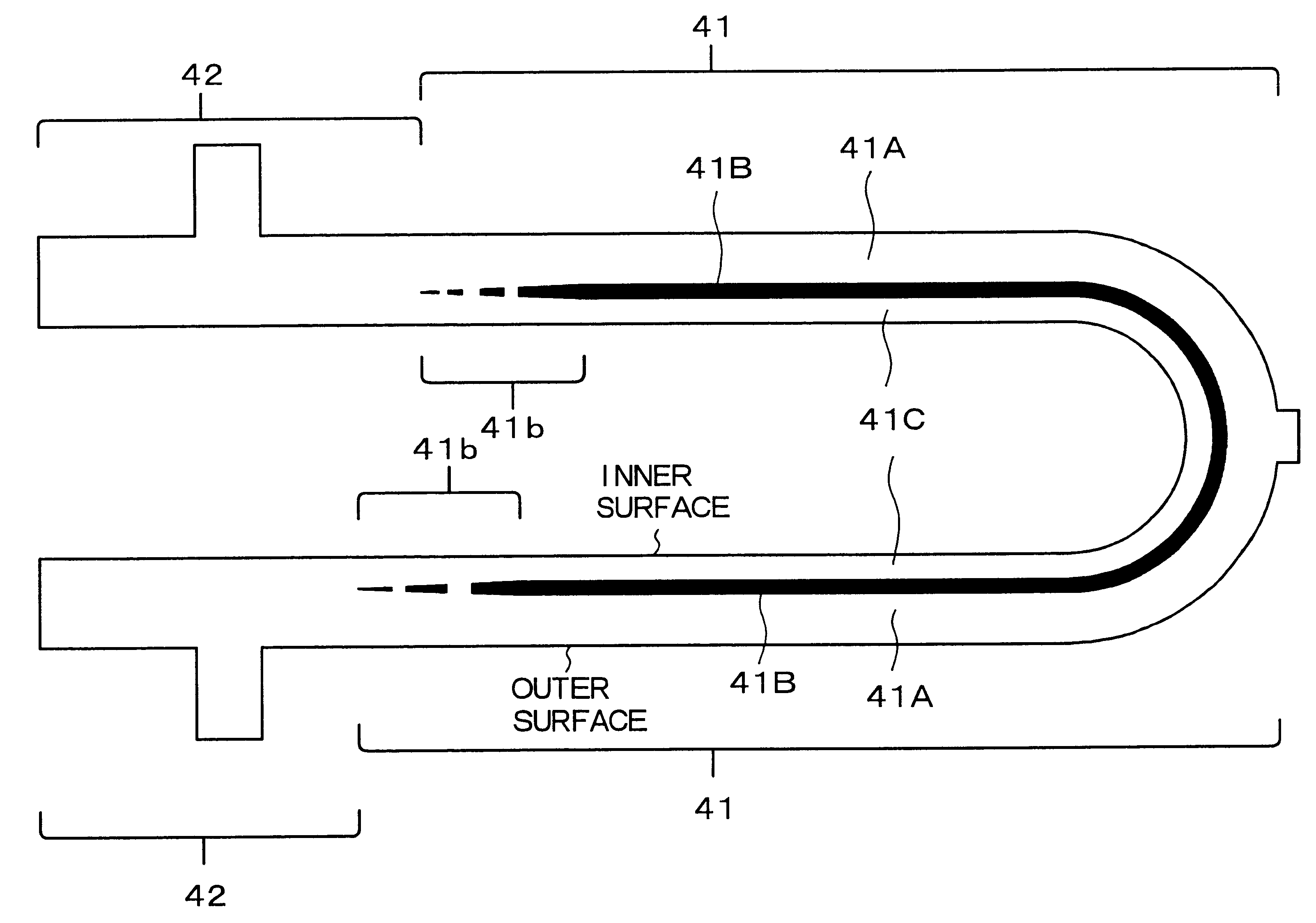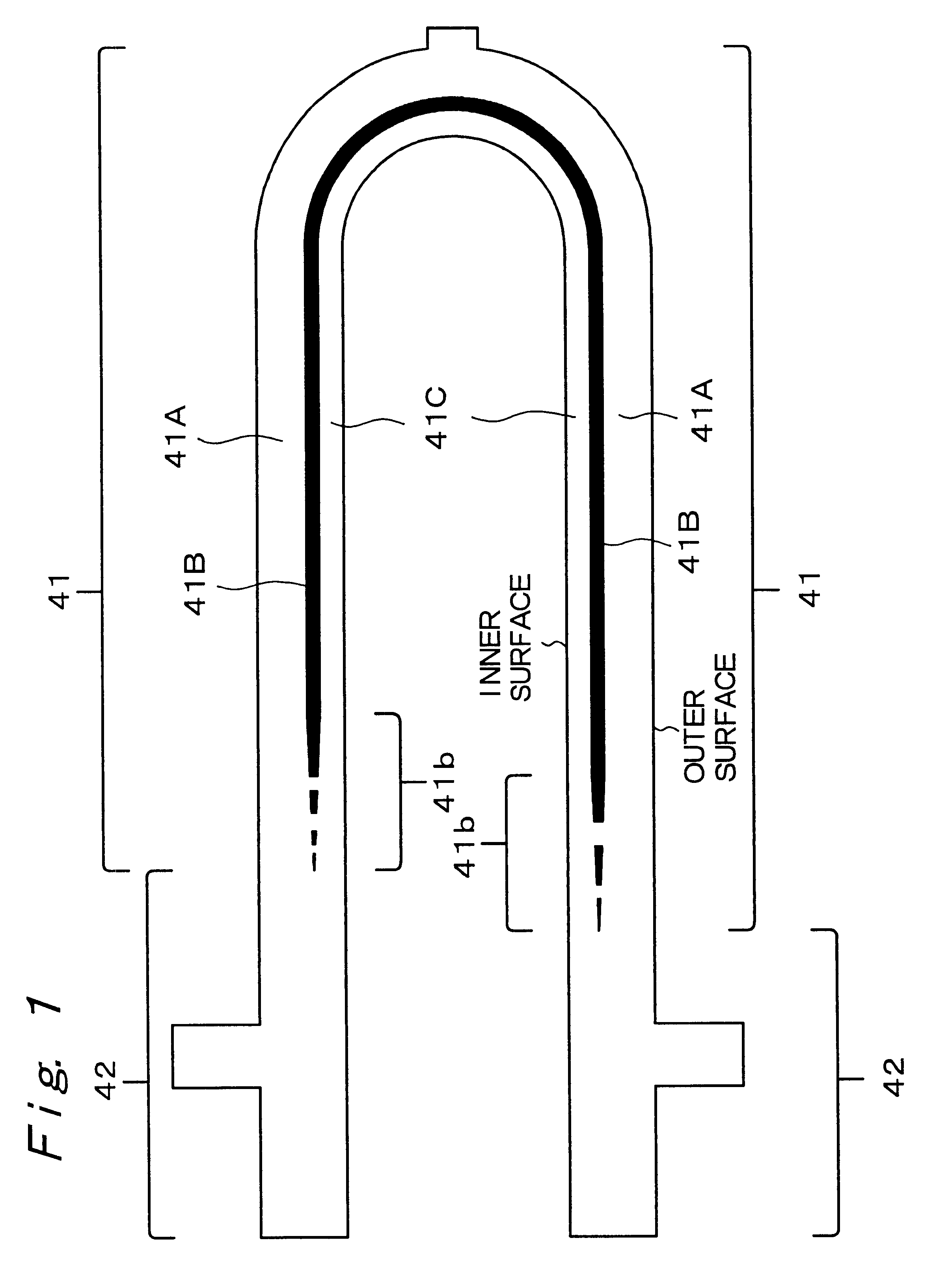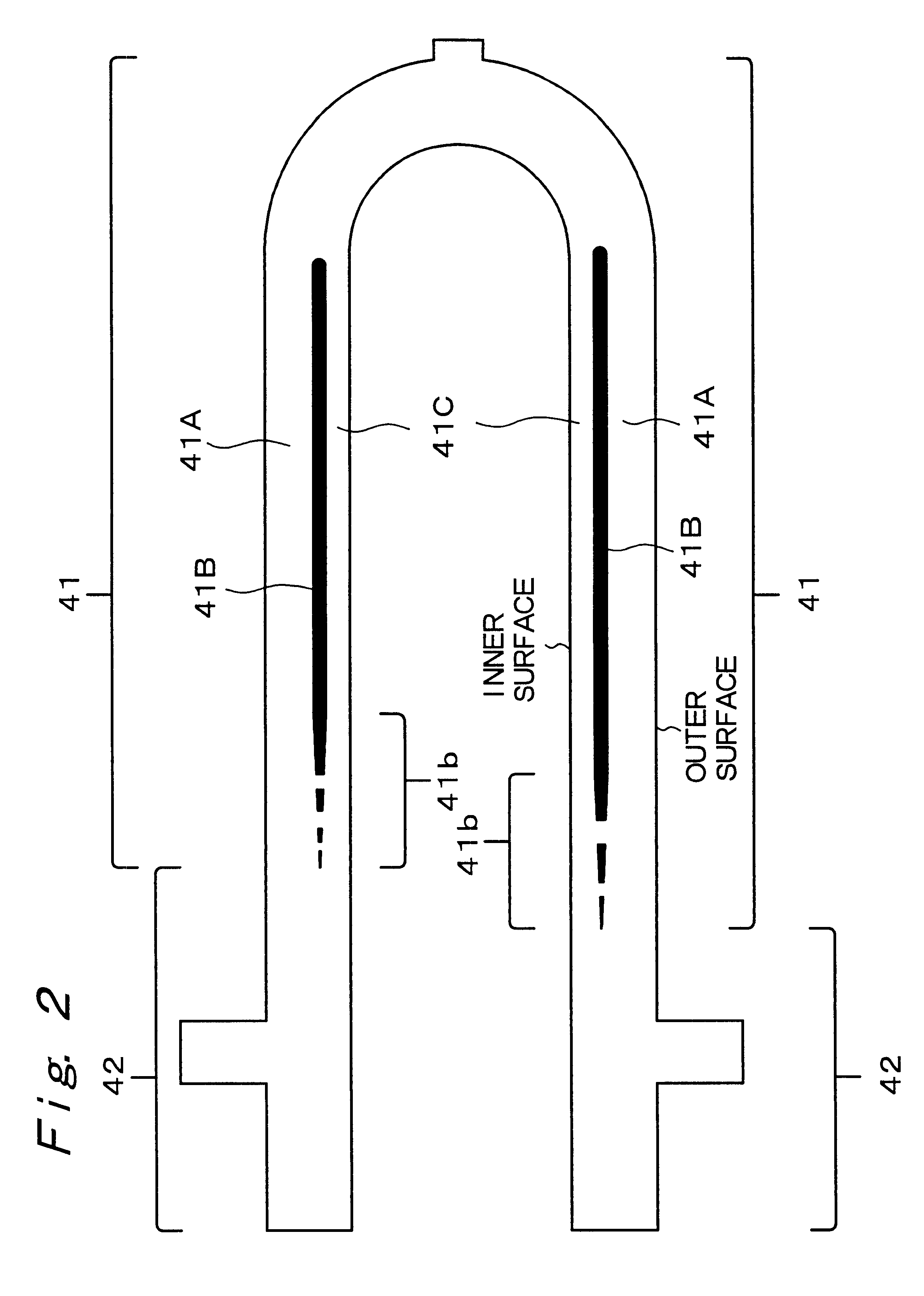Multi-layered article
- Summary
- Abstract
- Description
- Claims
- Application Information
AI Technical Summary
Benefits of technology
Problems solved by technology
Method used
Image
Examples
example 2
The same resins as those in Example 1 and the same injection molding apparatus as that in Example 1 were used for injection molding. Temperature conditions were set as shown in Table 1. Example 2 differs from Example 1 in the following point. Example 1 employed a simultaneous-injection molding method, while Example 2 employed an alternate-injection molding method.
Before injection molding, the first molten resin 40A which flowed into the second resin-flow-passage 23B in a previous molding cycle (the total of the first molten resin 40a which was left in the second resin-flow-passage 23B and the first molten resin 40A which was to constitute the crudely-mixed-state resin portion 40b) was left in the second resin-flow-passage 23B in an amount equivalent to 15% of the volume of each cavity 25.
First, in the same manner as in [Step-100], the first molten resin 40A (molten PET resin) was injected into each cavity 25 in an amount equivalent to 40% of the volume of each cavity 25. In this ste...
PUM
| Property | Measurement | Unit |
|---|---|---|
| Fraction | aaaaa | aaaaa |
| Fraction | aaaaa | aaaaa |
| Thickness | aaaaa | aaaaa |
Abstract
Description
Claims
Application Information
 Login to View More
Login to View More - R&D
- Intellectual Property
- Life Sciences
- Materials
- Tech Scout
- Unparalleled Data Quality
- Higher Quality Content
- 60% Fewer Hallucinations
Browse by: Latest US Patents, China's latest patents, Technical Efficacy Thesaurus, Application Domain, Technology Topic, Popular Technical Reports.
© 2025 PatSnap. All rights reserved.Legal|Privacy policy|Modern Slavery Act Transparency Statement|Sitemap|About US| Contact US: help@patsnap.com



